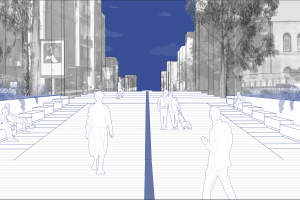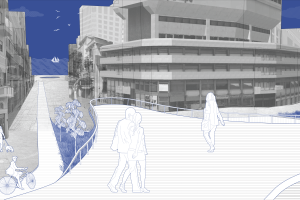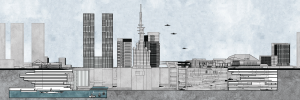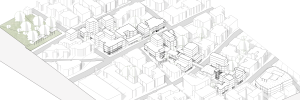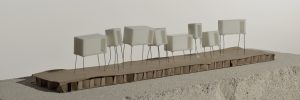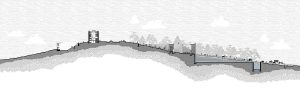Second Line to the Sea
Coastlines are a space that is entirely an exception to the rule: the connection with nature – direct, the social norms – more liberal, construction – prohibited, the climate and topography – natural and exposed. The uniqueness of the coastline stands out especially on the way to it and on the return from it, while passing through the urban space alongside which it exists. The combination of the physical proximity of the coastline and the city and the great difference between them is astonishing. It seems that even in the streets near the sea, the city is organized according to a different set of values, completely forgetting the big blue: the pace is urban, the view is blocked, the vegetation is different, the wind is gone. Are you crazy? Have you forgotten that you’re right next to the sea?
The dichotomous feeling between the coastline and the urban space raises many questions: Was the coastal experience intentionally restricted and delimited ? What exactly is holding it back from seeping into the city? If the sea is right here – why does the city remain dry?
In the project, I seek to disrupt the pushback of the coastal experience to the edge of the city and examine how to make the sea present, deep inside it. I propose breaking down the coastal experience into its different components – spatial, climatic, cultural or sensory, in order to position the coastal experience as a multilayered one that cannot be reduced to any single variable, such as a direct view of the sea, or certain distance from the coastline. Dividing the coastal experience into different characteristics allows identifying and locating fragments of the sea also outside the obvious context of the coastline, in less trivial spaces, deep inside the city. In the search for urban spaces into which “sea features” have managed to intermingle, I located a series of open spaces at the center of Tel Aviv, on its north-south axis, along the “second line” to the sea, each of which has a unique blend of sea features. I propose redesigning these spaces as “echo chambers” that amplify the “marine frequency” reaching each of them. The new plan shines a light on the unique affinity of these urban spaces to the sea, and offer a different form of diffusion between the city and the sea in each of these spaces. These actions strengthen the connection between the city and the sea by elevating the sea in the urban consciousness in a manner that is indirect, implicit and poetic.









